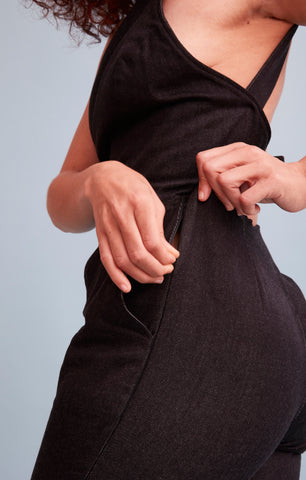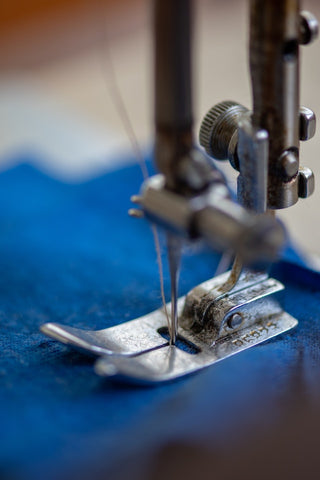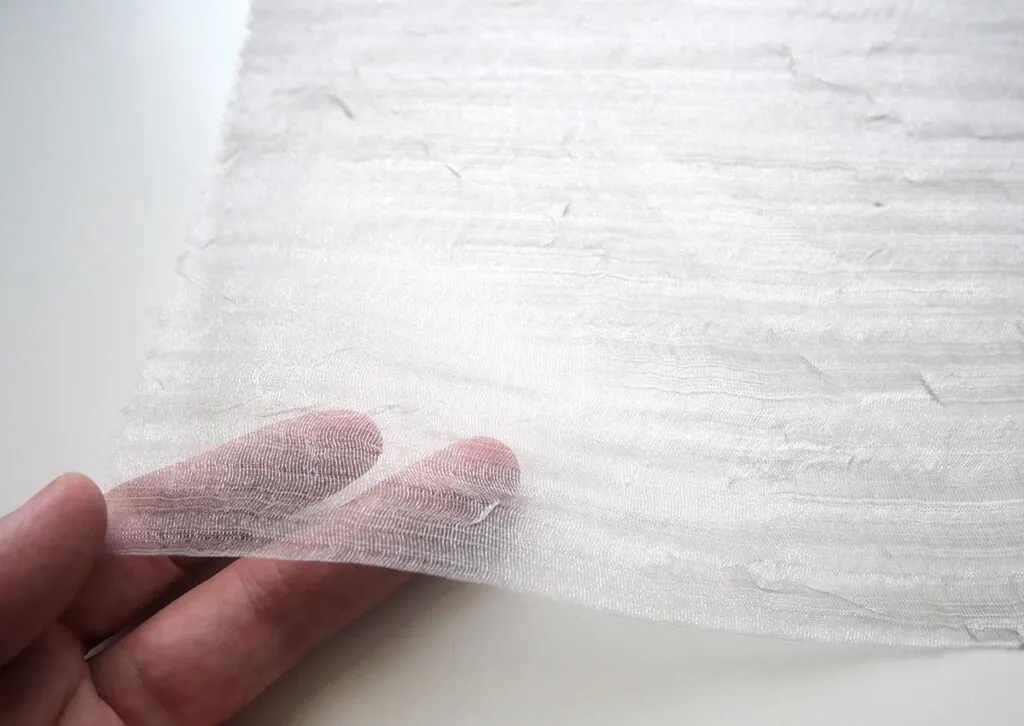Ugh, plastic.
I hate it and I'm going to bet that if you've found your way to me, you also hate it.
I hate that it's in everything. I hate that you can't buy anything without it being wrapped in plastic. I walk around the supermarket and think "what's the point in me trying to recycle or use natural materials when there is just so much plastic everywhere else"
But obviously, that's not the point, is it?
I want Leim to be a transparent space - I don't want to greenwash you and say the jumpsuits are totally green and I use natural materials only, when they aren't. You get that even though I say I use natural materials, I will at some point have to use some plastic, right?
So - here's a blog post highlighting exact how but also more importantly why I use plastic - and what I'm doing to try and phase it out completely.
* it only covers the plastic used in the jumpsuits, not outside of the product.
How I use plastic at Leim
I can't avoid it completely, as hard as I try - but I'd like you to know how and where I'm using plastic.
Number 1: Those pesky zips

The biggest use of plastic is without a doubt the zips.
They are made by YKK who have several factories, one in Italy and another in Japan (they are a Japanese company). They, by far, make the best quality zips. This is important because the fabric and seams at sides of your jumpsuit (or and kind of trousers) take quite a lot of stress through normal wearing (walking, sitting down, moving generally) and so the zips need to be the very best to accommodate this stress. I have personally had a poorer quality concealed zip (the types I use, that are invisible once sewn in) split on me mid dancing - not a good look and it's a good job I had a change of clothes with me!
The zips I use are made in YKK's Italian factory and I order whenever I order some new fabric - so in small batches basically. YKK do offer a recycled plastic zip, however, these are made in their Japanese factory and so the carbon required to transport these small orders from Japan to me in the U.K. would outweigh the benefits of the recycled plastic.
This is my biggest area of growth - I want to be able to order recycled plastic zips!
Number 2: I have to connect pattern pieces somehow... and it's with thread!

My second largest use of plastic is the thread.
I use a polyester thread for all the jumpsuits for one main reason - it's stronger than a natural alternative like cotton or linen thread. I tried using a cotton thread for a while but the amount of times it broke (and so I would need to rethread my machine at best, take my machine apart and pick out the broken threads at worst) became unsustainable. When I say unsustainable I mean I'd often have to throw the broken thread away - what a waste - but also through the course of making a jumpsuit I could have numerous breaks. This is wasted time that I don't have!
I have tried using a Tencel thread and, while it's not as strong as a polyester thread, it's not quite so bad as the cotton threads. It's only available in basic colours at the moment (again, I'm stuck with ordering 'off the shelf') but I plan to explore more the more I grow.
Number 3: adding strength and structure with interfacing

This one is my least popular plastic (if that could even be a thing) because I'm at the point where like... I don't even want to use interfacing.
I iron interfacing to some pattern pieces so that they are stiffer - it gives more structure and makes the piece of fabric its attached to just... more.
However, it is made from plastic. It's also bloody pain to use! It gets stuck to everything, it makes a mess of my iron and so I'm on a quest to get rid of it.
Part of this is me learning to design differently. Which I will be doing going forward. However, for my existing styles I am working on reinforcing with extra stitching and extra (natural) fabric as a sandwich layer.
How I don't use plastic in Leim
I have banged on quite a bit about how I do use plastic but there are a few ways that I have totally cut out plastic. In fact, many of these things have been 'must-haves' for me from day 1.
Some are not about plastic specifically but are about a wider topic of waste and recycling... sorry I got a bit carried away!
- All fabrics are from natural sources - cotton, linen, tencel (although I know there are some criticisms there. I can cover that in a different blog post)
- I use organic fabrics wherever possible - this is mostly true for my cottons. Linen requires very little pesticide use in its growth so it is naturally a more sustainable fabric choice!
- If the fabrics are not organic, they at least need to be dyed with OEKO-TEX certified dyes.
- All my printing is on acid-free paper and card. This includes my tags and labels and the tissue paper your order comes wrapped in
- All shipping bags are made from kraft paper with recyclable tape.
- Shipping is offset if you order with ShopPay (the little purple icon)
What am I doing about plastic usage in Leim?
I've outlined my plans to eventually reduce my plastic usage but here's some other ideas I have had to combat how much plastic I use:
- Experiment with the way I design the jumpsuits - do I even need to use the zips?
- Experiment with Tencel thread for basic colours like white and black
- Use cotton labels as and when my current labels run out
- I am phasing out using interfacing (which is a type of bonding fabric that you attach to a pattern piece to give it more structure and shape - typically on collars, necklines, waistbands and cuffs) in favour of using a piece of fabric or just designing the style differently to begin with. This one is tricky as I still want to give a great look, but it just requires being more clever with my designing!
This is by no means an exhaustive list and I'll try and update this as things change at Leim.
But I hope it's cleared up a few things and given you more of an insight into how I approach tackling plastic usage within my business.
Hetty xx


Leave a comment